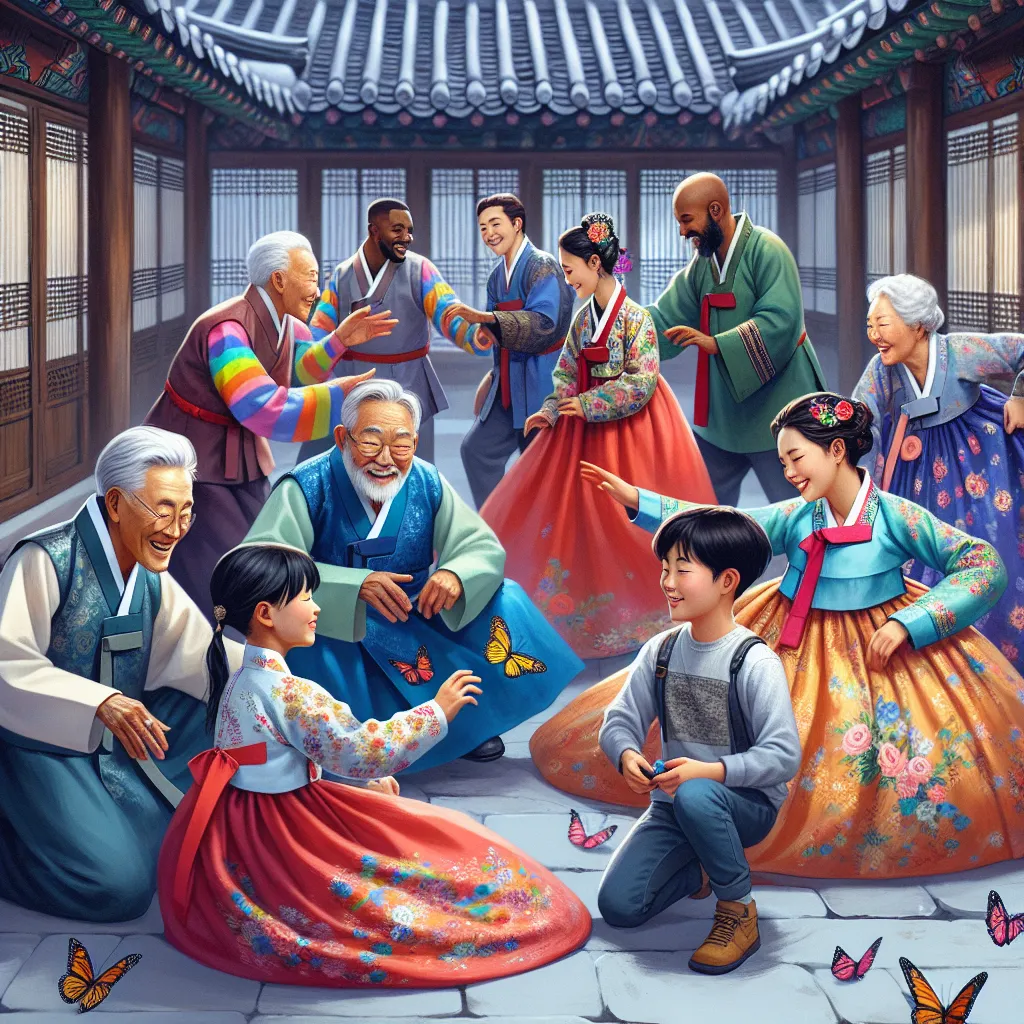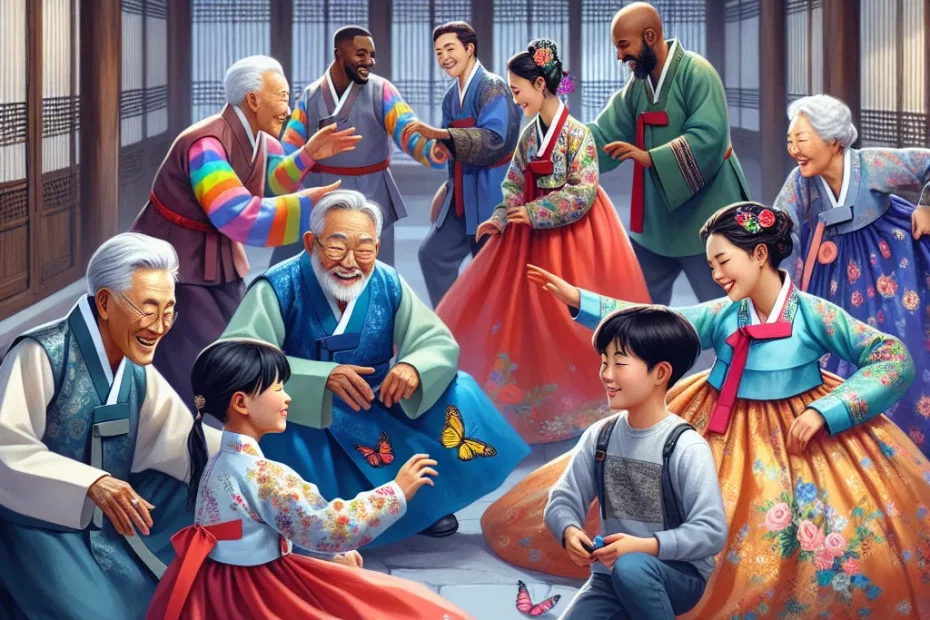The traditional Korean hanbok is not just a piece of clothing, but a reflection of Korea’s rich cultural heritage and history. Its resilience and enduring popularity showcase the deep connection between clothing and identity. From the intricate designs to the vibrant colors, each element of hanbok tells a story of tradition and symbolism. As we delve into the evolution of hanbok over the centuries, we uncover a tapestry of cultural influences and artistic expressions that have shaped this iconic attire. Join me on a journey through the history and symbolism of hanbok, and discover how this traditional clothing continues to captivate hearts and minds around the world.

The History of Hanbok Evolution
The evolution of Hanbok, the traditional Korean attire, is a fascinating journey that reflects the rich history and cultural heritage of Korea. Dating back to ancient times, Hanbok has undergone significant changes over the centuries, adapting to the social, political, and cultural shifts of the Korean peninsula.
Traditional Hanbok:
The earliest forms of Hanbok can be traced back to the Three Kingdoms period (57 BC – 668 AD), where garments were made from simple, natural fabrics like ramie and silk. The basic structure of Hanbok, consisting of jeogori (jacket) and chima (skirt), was established during this time.
Goryeo Dynasty Influence:
During the Goryeo Dynasty (918-1392), Hanbok saw the introduction of more vibrant colors and intricate designs, reflecting the influence of Buddhism and the royal court. The use of luxurious fabrics like silk became more common among the nobility.
Joseon Dynasty Transformation:
The Joseon Dynasty (1392-1910) marked a significant transformation in Hanbok design. The strict Confucian social hierarchy influenced the style of Hanbok, with different colors and designs indicating the wearer’s social status and rank. The iconic hanbok silhouette we recognize today began to take shape during this period.
Modern Hanbok:
In the late 19th and early 20th centuries, Hanbok underwent modernization influenced by Western fashion trends. The introduction of sewing machines and new dyeing techniques revolutionized Hanbok production, making it more accessible to the general population.
Contemporary Revival:
In recent years, there has been a resurgence of interest in Hanbok, both domestically and internationally. Designers are incorporating traditional elements into modern fashion, creating a fusion of the old and the new. Hanbok is not just a garment; it is a symbol of Korean identity and cultural pride.
The evolution of Hanbok is a testament to the resilience and adaptability of Korean culture. By embracing its rich history and heritage, Hanbok continues to captivate the world with its timeless elegance and beauty. 🌺👘✨
The Symbolism Behind Hanbok Designs
In the realm of traditional Korean attire, Hanbok stands as a timeless symbol of Korea’s rich cultural heritage. The intricate designs and vibrant colors of Hanbok are not merely for aesthetic purposes; they hold deep symbolic meanings that reflect the values and beliefs of Korean society.
The Symbolism of Colors
The use of colors in Hanbok designs is not arbitrary but steeped in symbolism. For example, the color white symbolizes purity and modesty, while red represents passion and energy. The combination of these colors in Hanbok conveys a harmonious balance between these contrasting qualities, reflecting the importance of balance and harmony in Korean culture.
The Symbolism of Embroidery and Patterns
Furthermore, the intricate embroidery and patterns found in Hanbok designs are laden with symbolism. The delicate motifs of flowers, birds, and other natural elements symbolize various virtues such as longevity, prosperity, and happiness. These symbols serve as a visual language, communicating wishes for the wearer’s well-being and fortune.
The Symbolism of Silhouette
The silhouette of Hanbok itself holds symbolic significance. The voluminous sleeves and flowing lines of the garment symbolize grace and elegance, reflecting the ideal of inner beauty and poise. The structured layers of Hanbok also symbolize hierarchy and respect for tradition, highlighting the importance of honoring one’s roots and heritage.
The Symbolism of Materials
In addition to the visual symbolism, the materials used in Hanbok designs also carry cultural significance. The use of silk, satin, and other luxurious fabrics not only enhances the aesthetic appeal of Hanbok but also signifies wealth and status. The meticulous craftsmanship and attention to detail in creating Hanbok further emphasize the value placed on tradition and heritage in Korean society.
Overall, Hanbok designs are not just garments; they are embodiments of Korea’s cultural identity and values. Through their intricate details, vibrant colors, and symbolic motifs, Hanbok designs serve as a visual representation of Korea’s rich history, traditions, and beliefs. Embracing the symbolism behind Hanbok designs allows us to appreciate the depth and beauty of Korean culture, making Hanbok not just a piece of clothing, but a living expression of Korea’s enduring spirit and resilience.
Hanbok Worn for Special Occasions
The traditional Korean hanbok is not just a piece of clothing; it is a symbol of Korea’s rich cultural heritage and history. Hanbok is worn for various special occasions, each with its own unique style and significance. From weddings to ancestral rites, hanbok plays a central role in Korean traditional ceremonies, reflecting the deep-rooted traditions and values of the Korean people.
Weddings: Symbol of Harmony
One of the most significant occasions where hanbok is worn is during weddings. The bride and groom wear specially designed hanbok that symbolize harmony and balance. The bride’s hanbok is typically vibrant in color, with intricate embroidery symbolizing fertility and good fortune. On the other hand, the groom’s hanbok is more subdued, often in earthy tones, representing stability and strength. Together, the bride and groom’s hanbok create a harmonious balance, reflecting the ideals of marriage in Korean culture.
Ancestral Rites (Jesa): Honoring Ancestors
Another important occasion where hanbok is prominently featured is during ancestral rites, known as Jesa. During Jesa ceremonies, family members wear hanbok to pay respect to their ancestors. The colors and designs of the hanbok worn during Jesa ceremonies hold symbolic meanings, reflecting the family’s lineage and honoring the spirits of their ancestors. It is a solemn occasion where hanbok serves as a connection between the past and the present, emphasizing the importance of family and tradition in Korean culture.
Traditional Festivals: Chuseok Celebration
Hanbok is also worn during traditional festivals such as Chuseok, the Korean Thanksgiving holiday. During Chuseok, families come together to pay respects to their ancestors and give thanks for the harvest. Wearing hanbok during Chuseok is a way to honor tradition and show reverence for the cultural heritage passed down through generations. The vibrant colors and intricate designs of hanbok worn during Chuseok reflect the joy and gratitude felt during this special time of celebration.
In addition to weddings, ancestral rites, and traditional festivals, hanbok is also worn for other special occasions such as Seollal (Lunar New Year) and Doljanchi (first birthday celebration). Each occasion has its own unique style of hanbok, reflecting the significance and customs associated with the event. Hanbok’s resilience and enduring presence in Korean culture showcase the deep-rooted traditions and values that continue to be cherished and celebrated to this day.
The intricate designs, vibrant colors, and symbolic meanings of hanbok worn for special occasions highlight the beauty and significance of Korean traditional clothing. Hanbok not only serves as a form of attire but also as a representation of Korea’s cultural identity and heritage. Its timeless elegance and cultural significance make hanbok a cherished symbol of Korean tradition and a testament to the resilience of Korea’s cultural heritage. 🌸🇰🇷✨
Influence of Modern Fashion on Hanbok
The influence of modern fashion on Hanbok, traditional Korean clothing, is a topic of great interest and importance in the fashion industry today. As the world becomes more interconnected, traditional clothing styles are not immune to the impact of global trends. Hanbok, with its rich history and cultural significance, has been both challenged and invigorated by modern fashion influences.
Shift in Perception and Design
In recent years, there has been a noticeable shift in the way Hanbok is perceived and worn. Younger generations are embracing Hanbok not only for traditional events but also as a fashion statement. Designers are incorporating modern elements into Hanbok designs, creating a fusion of traditional and contemporary styles. This fusion has breathed new life into Hanbok, making it relevant in today’s fashion landscape.
Role of Social Media
Social media has played a significant role in the resurgence of Hanbok. Influencers and celebrities showcasing Hanbok in a modern context have helped popularize the traditional attire among a wider audience. The hashtag #Hanbok on platforms like Instagram has millions of posts, reflecting the growing interest in this cultural attire.
Color, Pattern, and Silhouette
One of the key influences of modern fashion on Hanbok is the use of vibrant colors and bold patterns. While traditional Hanbok was known for its subdued colors and elegant simplicity, modern interpretations often feature eye-catching hues and intricate designs. This modern twist has made Hanbok more appealing to younger generations who appreciate bold and expressive fashion choices.
Furthermore, the silhouette of Hanbok has also evolved to align with modern fashion trends. Designers have experimented with different cuts and shapes, creating contemporary versions of the traditional garment. This evolution has made Hanbok more versatile and suitable for a variety of occasions, from formal events to casual outings.
Preservation of Tradition
Despite the influence of modern fashion, Hanbok remains deeply rooted in Korean culture and tradition. The garment continues to be worn during important ceremonies and celebrations, preserving its historical significance. The resilience of Hanbok in the face of changing fashion trends is a testament to the enduring beauty and relevance of this iconic attire.
In conclusion, the influence of modern fashion on Hanbok has brought about a dynamic transformation in the way traditional Korean clothing is perceived and worn. By embracing contemporary elements while staying true to its cultural heritage, Hanbok continues to captivate fashion enthusiasts around the world. The fusion of tradition and modernity in Hanbok exemplifies the adaptability and timelessness of Korean fashion. Let’s celebrate the resilience of Hanbok as it continues to evolve and inspire generations to come! 🌟👘🌸
The resilience of Korean hanbok as a traditional clothing reflects the deep-rooted culture and heritage of Korea. Through centuries, hanbok has evolved, yet maintained its essence, showcasing the history and traditions of the Korean people. The intricate designs and vibrant colors of hanbok symbolize various aspects of Korean life and values, making it more than just a piece of clothing. Hanbok is worn with pride during special occasions, embodying the grace and elegance of Korean traditions. Despite the influence of modern fashion, hanbok continues to hold its significance, bridging the past with the present. Its enduring popularity is a testament to the timeless beauty and cultural significance of Korean hanbok.
